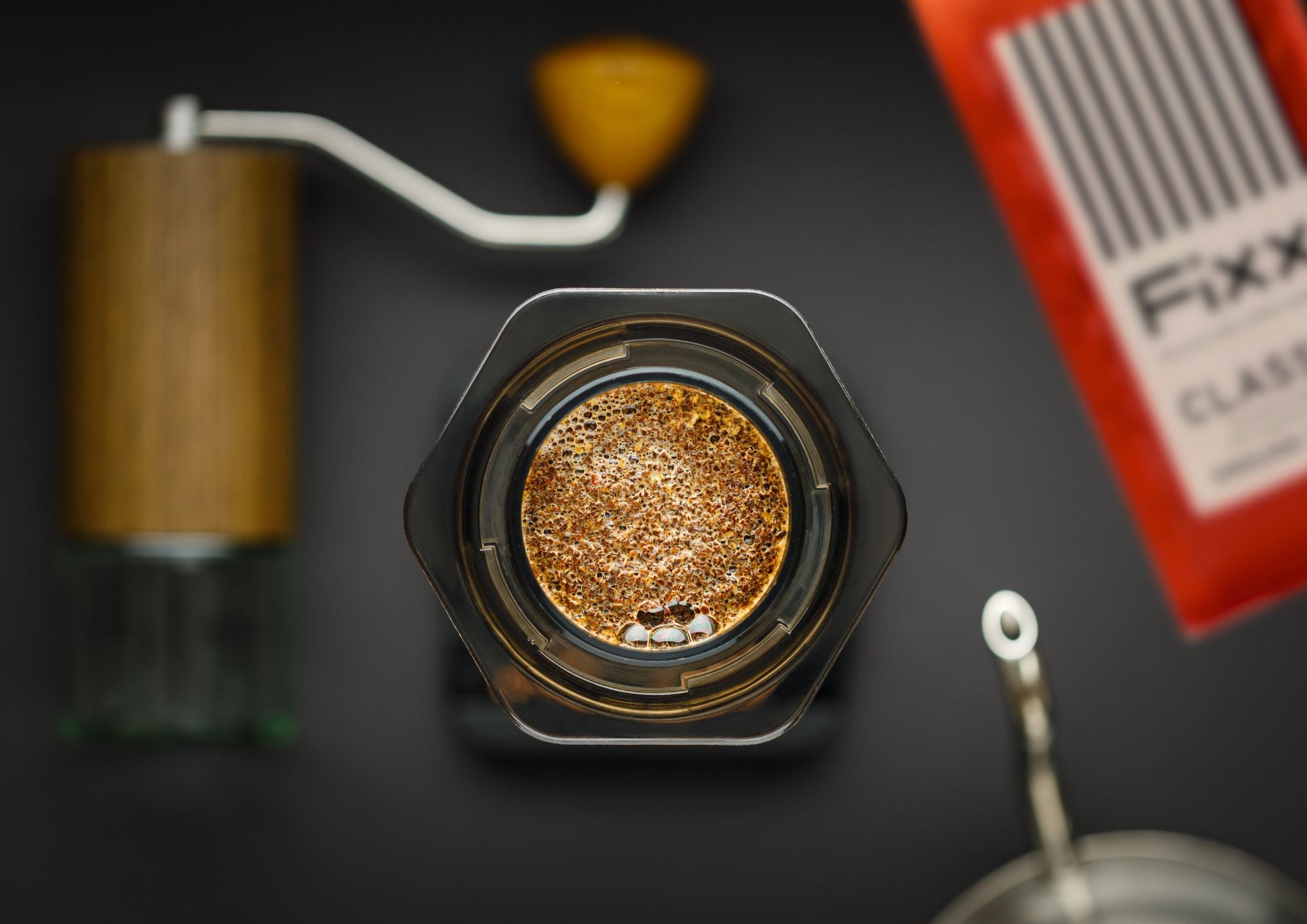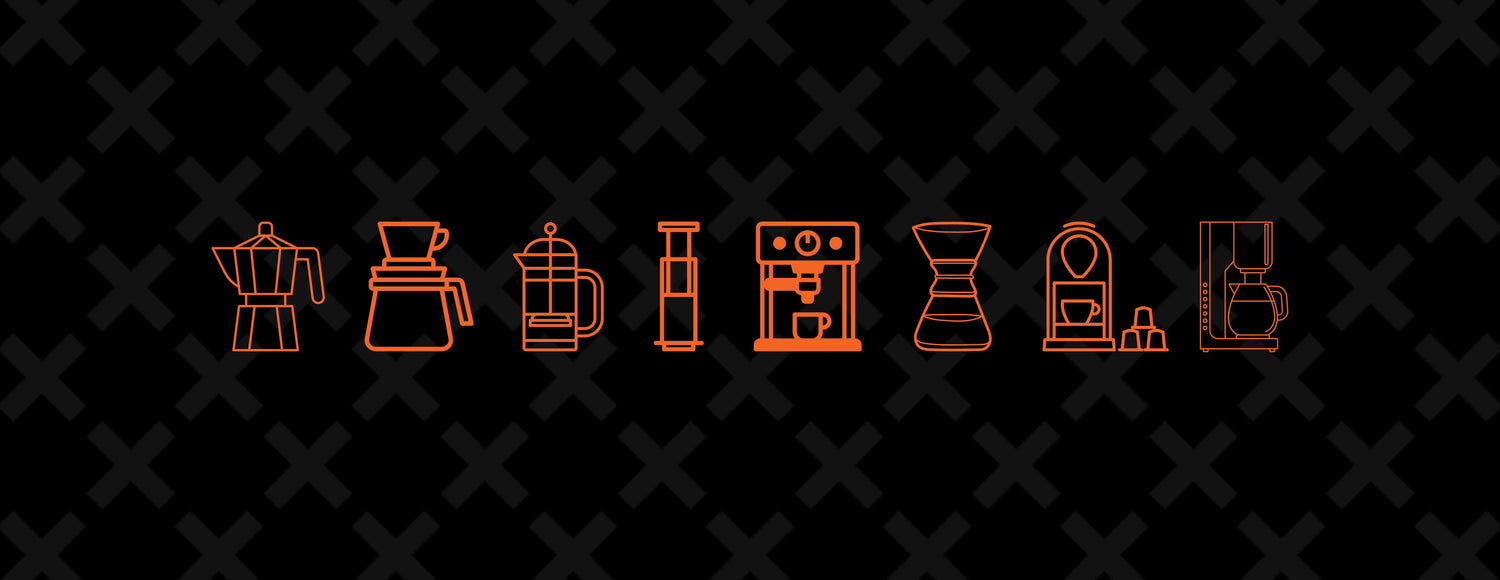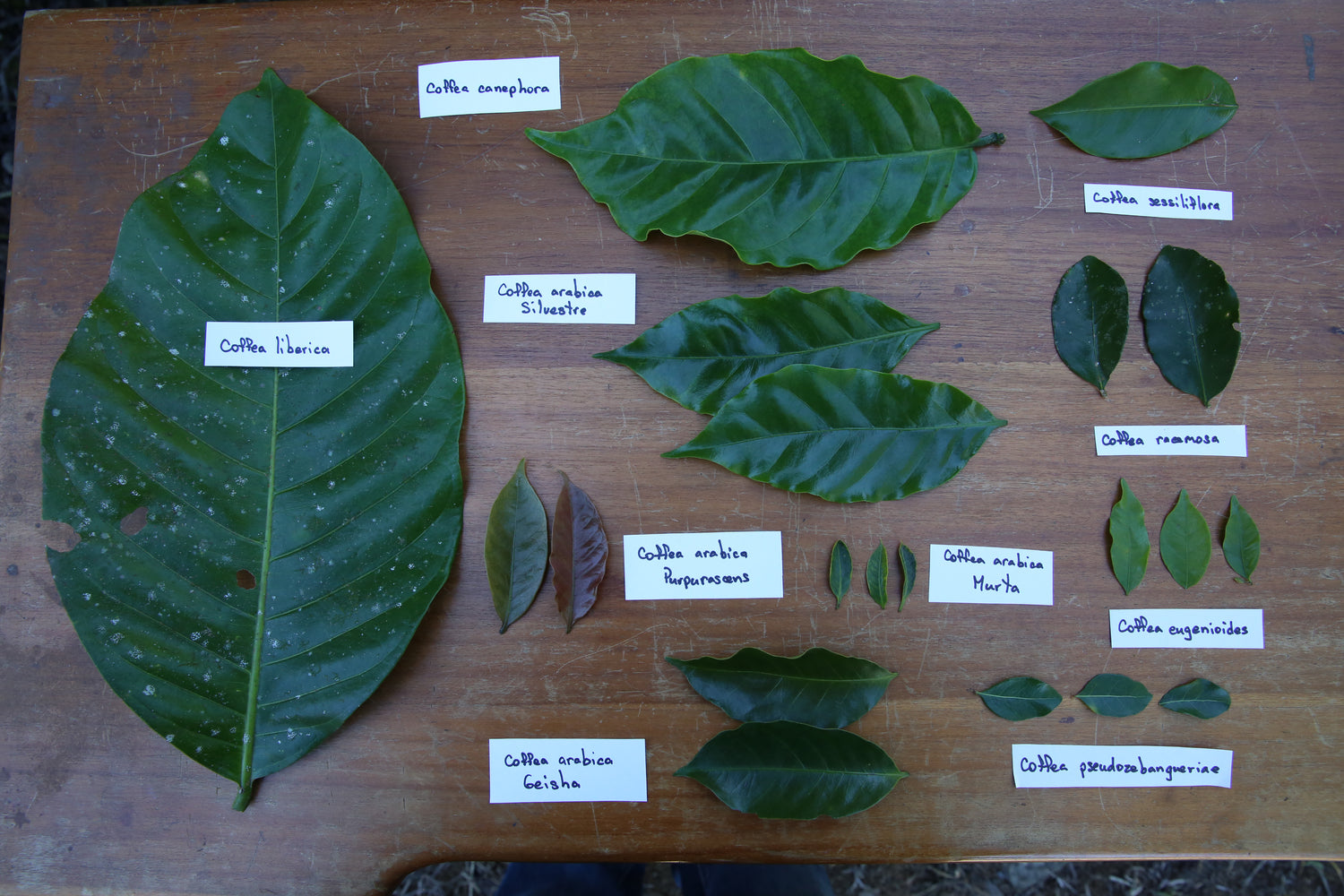
Why We Love the AeroPress
How do you create a classic? Honestly, if I knew the answer to that question, I'd be a wealthier man. Because the only authentic way to create a classic is by accident. It's never the creator that decides what becomes a classic. It's the public. The everyday people who consume and enjoy what has been created. They decide. No matter if we're talking art, fashion, food, technology, or whatever. If time catches up with something and leaves it behind? Then it was only ever a fad. In fact, in many circles, the word itself has become as redundant as gourmet in the culinary world. Overused. Misplaced. Unjustly rewarded to things that never deserved it.
So forgive me when I say I want to talk about a classic. And I'm not talking about our original, multi-award-winning coffee. I'm talking about the AeroPress. A coffee brewer that appeared to come from nowhere and gatecrashed a marketplace seemingly reserved iconic, classic designs. A brewer that challenged us to think how coffee could be brewed and would go on to conquer the world.
Read on to find out more.

What is an AeroPress?
For those of you who need clarification, an AeroPress is a type of manual coffee brewer. It comprises two main parts: a cylindrical chamber and a smaller cylindrical plunger. The plunger is topped with a silicone cap that, when placed into the larger chamber, creates an airtight seal, turning it into a piston, syringe-like device. Ground coffee is placed in the larger tube, hot water gets poured in, and the user pushes down the plunger, forcing the coffee through filter paper into a waiting cup or carafe. Simple. And perfect in its simplicity. They are lightweight and portable, and almost impossible to break. And they are effortlessly easy to clean. An instant classic, then, you might say? Well, no. It took the coffee community a little while to get used to this thing. Allow me to explain why.
Firstly, it didn't look like any coffee brewer that existed then. That might seem like a strange starting point. But it's true. It looked more like a device from the Austin Powers movies that I won't mention by name. But those of you that know will know.
Secondly, it didn't conform to how coffee was traditionally brewed. Usually, coffee is brewed in one of two ways, immersion or percolation. Immersion is when all the coffee hangs out with all the water for a desired amount of time before being filtered and enjoyed (french press, clever dripper). Percolation is when water passes through a set amount of coffee into a vessel ready for drinking (espresso, filter coffee, moka pot). The Aeropress was both of these methods at once.
And finally, it was made by a toy company?

Who Invented the AeroPress?
How far could you throw a cup of coffee? Ok, an empty cup because, obviously, you won't want to waste your cup of FiXX. You know what? Forget about the cup. What's the furthest you could throw any object? Well, for context, the current world record was set in 2005 by Australian David Schummy, who threw a non-returning boomerang 427.2 meters (1401.5ft). And before you ask, yes, that is a thing, and no, it's not just a stick. But in doing so, Schummy broke a record that had stood since 1986, when American Erin Hemmings threw an Aerobie 406 meters (1333ft).
If you're not sure, an Aerobie is one of those ring frisbee things. Ye know, the plastic ones with soft rubber edges that are great fun, albeit slightly terrifying, when children are around, and the ones that ultimately get stuck up a tree. Yes, those frisbees. Well, that was invented by Alan Adler, who also invented, yep, you guessed it, the AeroPress.
Strangely, it all began with a love for sailing. Originally an electronics engineer, Adler began studying aerodynamics in his spare time in the early 1980s because he wanted to design sailboats. Having always been something of an inventor, Alan applied his newfound knowledge of aerodynamics to devising flying toys. After creating the Aerobie, his wife convinced him to start a business making and selling this flying ring. And so, in 1984, Alan and his wife founded Aerobie, Inc with the Aerobie flying ring as its centrepiece. The Aerobie Pro would go on to set several world records and would remain the company's best-selling product by some distance. Until that is, Alan became frustrated with brewing coffee.

Why is the AeroPress so Popular?
All good products solve a problem. Some do it so well that you might not have even noticed there was a problem in the first place. And it might seem strange looking back now, but in the early 2000s, there were few good options for making a cup of quality coffee at home. As in, a single cup of coffee. Batch brew ruled. Domestic espresso machines hadn't really taken off yet, and those that did exist were very expensive. Capsules were only beginning to come onto the market, and it would be a while before quality followed. Home filter machines were for brewing larger pots of coffee. And the French press and stovetop brewers were restricted in their ability. Pour-over brewers existed, but they were mainly for brewing larger amounts like the Chemex. It was around this time Hario began to develop the V60 after noticing the same issue.
Alan quickly arrived at his syringe design and made a prototype in his home lab. Almost instantly, he was amazed at the results. Firstly, he was delighted to discover that, by accident, the AeroPress was self-cleaning. The silicone stopper essentially wiped and cleaned as it moved up and down the coffee chamber. But more importantly, the coffee was full of flavour, smooth and devoid of bitterness. It was so good, in fact, that very little changed design-wise from that first prototype. Instead, Alan began to focus on what recipe to brew. Because this is where the AeroPress really comes into its own.
What is Unique About The AeroPress Brewing Process?
With most brewers, you are bound by specific parameters. Take grind size, for example. You cannot expect to make good espresso if you have a very coarse coffee. The water will simply flow through the coffee too quickly to extract all the flavours. On the flip side, use a very finely ground coffee in a French press, and you will end up with a muddy, silty cup of coffee. The filter isn't designed to catch coffee that fine.
With an AeroPress, however, you can use pretty much whatever grind size you want. You can adjust the amount of coffee you use or water. You decide how hot you want your water to be. How long you leave it to brew for. How many times you stir, if at all. Even the amount of pressure you use to push. All of these factors are variable and controlled by the user, and when combined, mean there are nearly limitless ways to adjust your coffee. It was a brewer that was immensely fun to play with. It was, after all, made by a toy company.
A Brewer for Anyone and Everyone!
And it's worth pointing out at this point that Alan had zero professional coffee experience. He never claimed to understand the fundamentals of roast levels, origin profiles, processing, or any of that. He knew what a good cup of coffee tasted like to him, and this new brewer could achieve it effortlessly. And this was the beauty of the AeroPress. No matter how nerdy you were about coffee, this brewer could deliver consistent results.
It is easy to make good coffee with an AeroPress. But some would say because of the number of variables involved, it was a hard brewer to master. Surely there was no way to measure the greatness of any one cup of coffee. Certainly, there'd be no way to crown someone a world champion, right?

What is the World AeroPress Championship?
Of course, there was. Competitiveness is part of the human psyche. Henry Ford once said the first car race probably happened around ten minutes after the first car was invented. And even though the world of coffee was already full of competition, there was room for more.
World AeroPress Championship Origins
The inaugural World AeroPress Championship (W.A.C.) was held in Oslo, Norway, in 2008. In fact, it was an all-Norwegian affair with only three competitors; coffee professionals Chris Kolbu and Tim Varney and their friend Anders Valde. Calling it the World AeroPress Championship was a tongue-in-cheek mockery of how American sports call themselves World Champions when only teams from the U.S.A. are involved. Now, before anyone gets annoyed, I know that teams from Canada compete in some of these sports. The G.A.A. Football Championship involves teams from London and New York. Still, no one calls Kerry the current World Champion of Gaelic Football! But anyway, I digress.
It was the brain-child of Tim Varney and Tim Wendelboe, with the event being held in a small cupping room at the back of Tim Wendelboes' eponymous cafe. Wendelboe, a former World Barista Champion, would act as judge, and the format was simple. The three competitors had five minutes to brew a cup of coffee however they saw fit using the same beans and an AeroPress (obviously). The resulting coffees were then blind-tasted by Tim Wendeloboe, who chose his favourite. And Anders Valde, who, in his own words, was only a home coffee enthusiast, was crowned the first-ever World AeroPress Champion.
W.A.C. Today
Since then, like the brewer itself, its popularity has grown beyond all expectations. The 2022 W.A.C. was held across 56 countries, with 4,445 competitors participating, and the finals being held in Vancouver, Canada. The format has remained somewhat the same; the main difference now is that it has become a multi-round elimination tournament. Matches consist of three entrants, professional or otherwise, brewing a cup of coffee using the same coffee to whatever AeroPress recipe they want in five minutes. The brewed coffee is then blind-tested by three judges who, without conferring and on the count of three, point to their favourite coffee. The losers are eliminated, and the winner proceeds to the next round until one is left standing and crowned World Champion.
It's a good fun event, open to all, and starkly contrasts other coffee competitions that involve a touch of pageantry and elitism. It's a competition that celebrates experimentation and rewards creativity, so long as it results in a good cup of coffee!
In Conclusion...
Very little has changed about the AeroPress since it was launched in November 2005 at the CoffeeFest trade show in Seattle. Besides a change in colour and the material used to make it, it is almost exactly the same. But the shift in attitude toward it is beyond recognition. It has brought coffee professionals and home enthusiasts together. And it did it by simply reminding us all that coffee can be individualistic, immersive, and with the right toy, lots of fun.
So if you already own an AeroPress, take a second to appreciate its brilliance. And if you haven't already, why not try some World Championship recipes. But if you don't own one, you should definitely consider adding one to your coffee set-up. They're really not expensive and in the range I would feel appropriate to subtly drop hints around a loved one if you have an upcoming birthday! But what then to brew using this classic coffee maker with unlimited options? Any of your favourite FiXX coffees will work well, but FiXX Classic sounds like an appropriate starting point.
Thanks for reading.
Kevin





